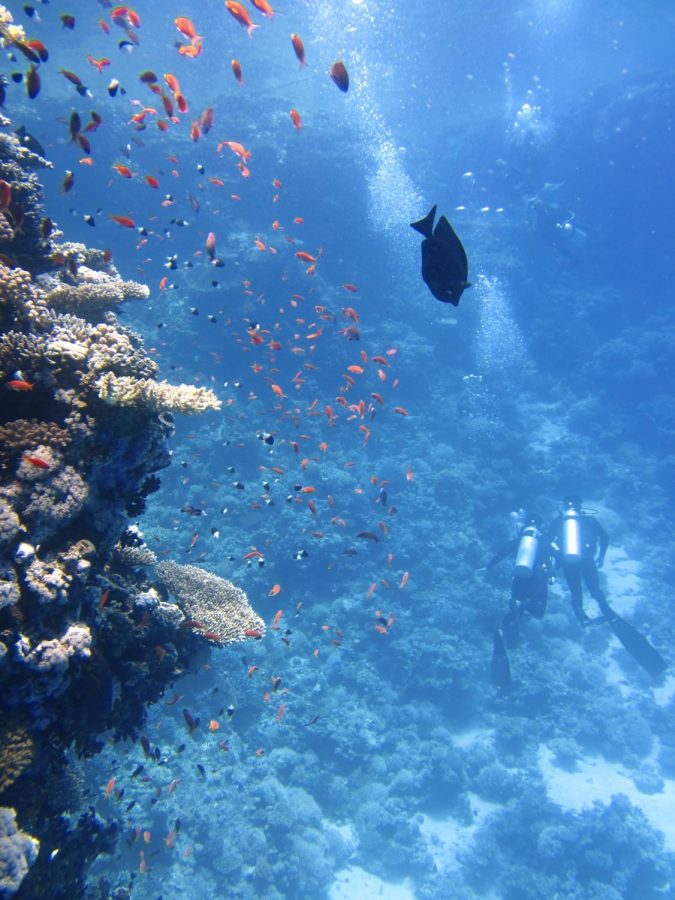Warm Water Fish Migrating Poleward
In recent years, it has been found that staggering amounts of warm-watered species of fish have been migrating to cooler regions of the ocean. There have been notable studies from both coasts of the United States demonstrating that these fish are being found in regions they have never been before. Although this information may lead people to believe that this is a direct result of global warming, the real cause of the temperature changes in the ocean may be more complicated than people originally thought.
A study from the University of California has found that several southern species of marine life have been found in northern California and Oregon. In this study, 67 species were found in areas that are uncommon for them. Of these species, 37 of them were the northernmost ever documented.
From 2014 to 2016, massive heat waves resulted in a very large mass of warm water that moved southward from the Gulf of Alaska. As this mass of warm water moved, it collided with El Niño, an event that occurs every few years and can cause global ocean climate changes. The warm water currents that resulted from the El Nino collision moved north from South America into the Pacific Ocean bordering North America. The combination of the heat wave and El Niño made irregularly warm water for an extended period of time on the Pacific coast of the United States. Intervals of time where there is warm water in a region of the ocean offers a gate to marine life to migrate to the warmer-watered region. The combination of these two events gave a variety of warm-water species an abnormally long interval to migrate. This is the overarching reason for why there was an unprecedented number of warm-water species being found in more northern biomes.
Even though El Niño is a naturally-occurring climate pattern on Earth, it does not account for the abnormal magnitude of its impacts in recent years, nor the record-breaking heat waves. Many believe that these are results of the general increase in temperature on the planet. There have been other instances of warm-water species of marine life being found in more northern climates, but not from a result of natural climate patterns. In 2013, a sailfish was found by fishermen while fishing in the Cape Cod Canal. This is unusual, as sailfish are usually found in tropic and subtropic aquatic regions. According to a 2013 study from Nature, fish in warm-watered regions tend to move closer to the poles of Earth to maintain the same temperature of water then they are accustomed to living. This study, along with many others, suggests that the temperature of the oceans is increasing.
The increase of water temperatures, along with the migration of warm-water marine life, poses a large threat to many species and has the potentially disastrous outcomes. A larger number of species of fish in certain areas of the oceans will likely result in fishing competition and the over-fishing of a number of different species. Essentially, an overabundance of fish species in a region of the ocean can result in a future with dangerously low numbers of fish in the same area.
Another problem with fish migrating to new regions is the concern of potentially invasive species threats. When a new species gets placed into an unfamiliar ecosystem, it can interrupt the natural flow of the food chain within the environment. As a result, there is potential for some species to thrive and become overly abundant while other species greatly diminish. In certain cases, a species belonging to a certain biome in the ocean may be vulnerable to a new species introduced. This, in turn, creates a problematic situation where a species could be in danger of becoming extinct.
The tropical aquatic regions on Earth are amongst the most biologically diverse places on the planet. When the warm-water species leave their environment, the ecosystem they left behind is also affected. Instead of gaining new species in the ecosystem, these tropical areas are losing members of their ecosystem. Due to the complexity of the interactions within the environment, there are similar problems to be considered with some species becoming overly abundant or running the risk of endangerment or extinction. Some species in these regions will not be able to adapt to warmer ocean climates, but also do not have the means to migrate to cooler waters like the other marine species. Since these bodies of water have such massively diverse species living in such a relatively small area, there is potential for the planet to lose a significantly large number of species.










